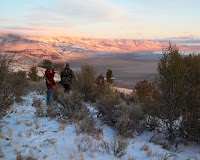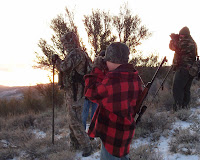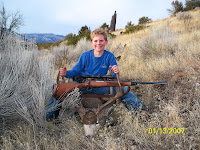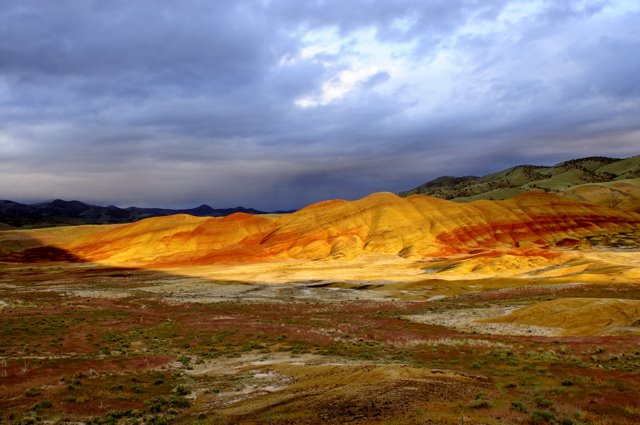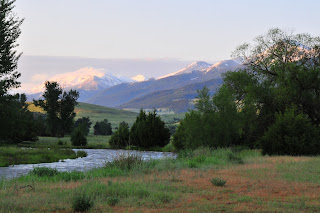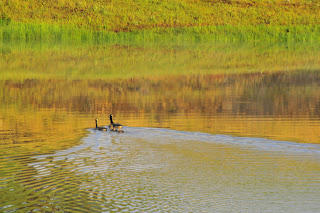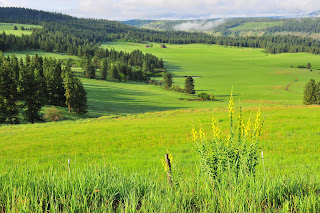
Did you ever wonder if you would have to worry about people stealing your images? It can happen and most likely you will be really lucky if you can recover any money that should be yours. Here's what happened to me.
A couple of years ago I shot some photos of some fiddle players during a fantastic sunset. I silhouetted the players against the red sky and they loved it. I sold several images to them and was contacted by others who wanted to buy more. The local music association asked if they could use some of the images to promote their website. Of course I agreed to their use so long as it was a one time use and that I received photo credits on the website. Earlier this spring I was surfing the web looking for photography ideas and was surprised to find one those photos advertising a local art association website. They were even offering the image for sale! I was just a little hot over this. I called their phone number and left messages and sent emails until I finally got the image removed. Of course no money was ever made from their use of the image!
A little later I was asked to do a photo shoot for the local search and rescue dog team. I captured some great images and the SAR team was really happy. During one event with them there was another photographer from a local paper along. He was doing a story about the team and was also doing his own photography. I was asked to provide a few of my shots as well which I happily did. The SAR team is a great organization and I want to support them all I can. I did require that the use be one time only and of course I required photo credit in the paper with my name under the images. I even wrote my name on the back of the prints I provided along with the specific use requirements. Guess who's name appeared under the photos! It wasn't mine! I raised hell again but still the damage had been done. Well that was a couple of years ago.
Most recently there have been a couple of instances in which the SAR team has been called out and have performed their jobs beautifully. Guess which image has been popping up again with the articles in the paper and no, I have not been given credit for that image.
This last instance was a classic, the newspaper also has a website. The picture they have been using was a full size image on their front page and not only that they were offering it for sale in their stock photography site.
Here's the thing, that image is a really really popular photo with them. The continue to use it over and over without permission. But as soon as I tell them I own it and that they need to reimburse me for it's use, they backwater like mad. They've finally removed it from the stock photography site, and promised to contact me should they ever wish to use it again. Fat chance! Yes! I would be more than happy for them to use it, so long as my name is with it but after all the trouble it has caused I'll be surprised if I ever hear from them again.
Sooner or later I'm sure I'll be looking for an attorney who knows the law regarding copyright infringement. Until then I keep an eye out on my own.
In the meantime, if you do like me and allow a newspaper to use your images, be sure to track what they do with it. Once they get their hands on it they think they own it. They have their own publishing company and they will even print your images on calendars, or whatever. You can check this out yourself. Do a google search for any newspaper you like and open their home page. then look at their photo galleries and go from there. You'll see what I'm talking about.
I hope you find this article usefull. Be sure to visit my website at
http://dwainspix.com to check out my photography and products at Zazzle.
If you are and RV'r or wish to become one you might be interested in our other two blogs. Check them out at
D and D's RV Tips and at
Dwain and Debbies Road Notes.

 As you can see from the images below, the little Kodak camera has done a great job of capturing our event. The day was very cold and very windy with blowing snow at times. Using the little Kodak in this instance was an advantage over my Nikon D300. A Camera I really like.
As you can see from the images below, the little Kodak camera has done a great job of capturing our event. The day was very cold and very windy with blowing snow at times. Using the little Kodak in this instance was an advantage over my Nikon D300. A Camera I really like.